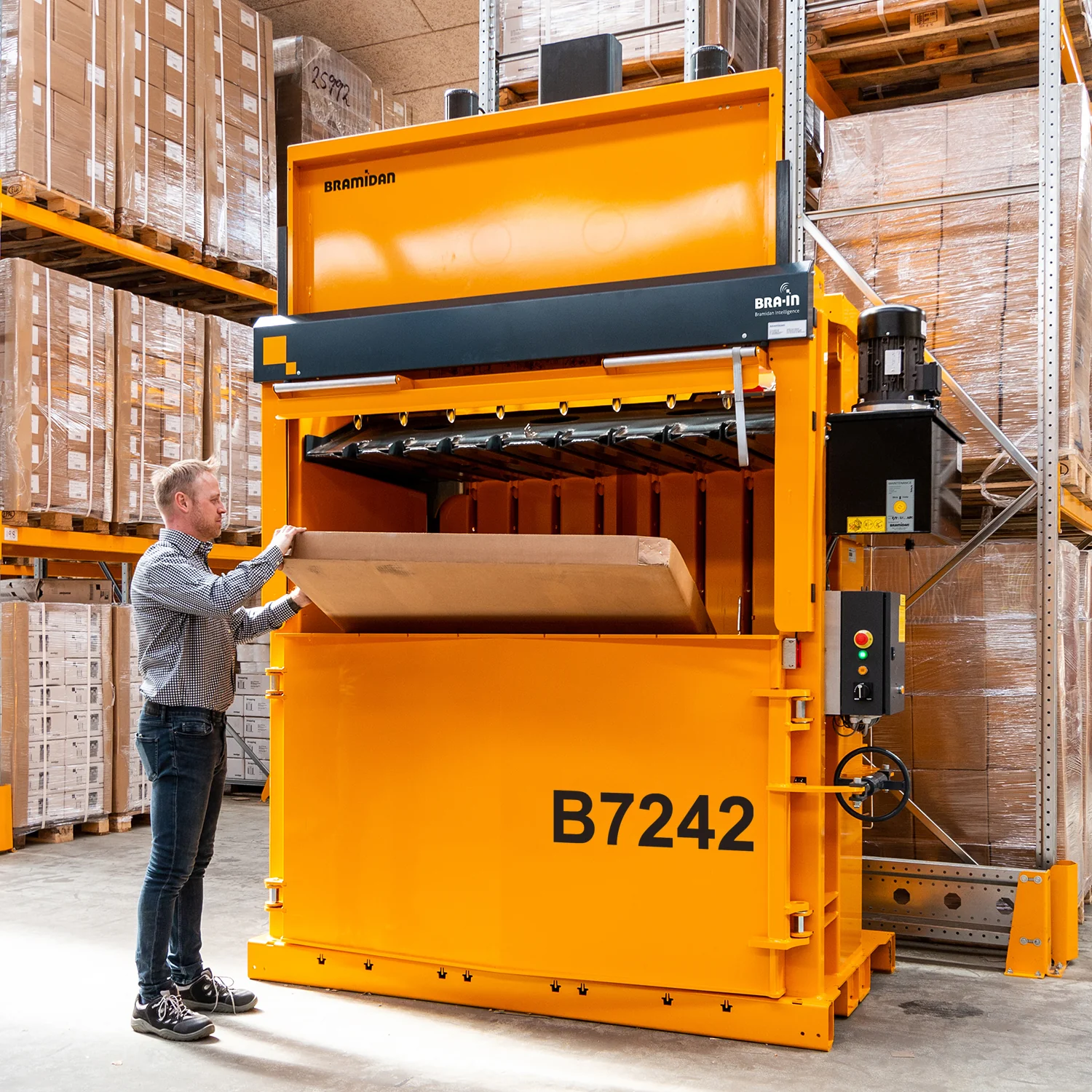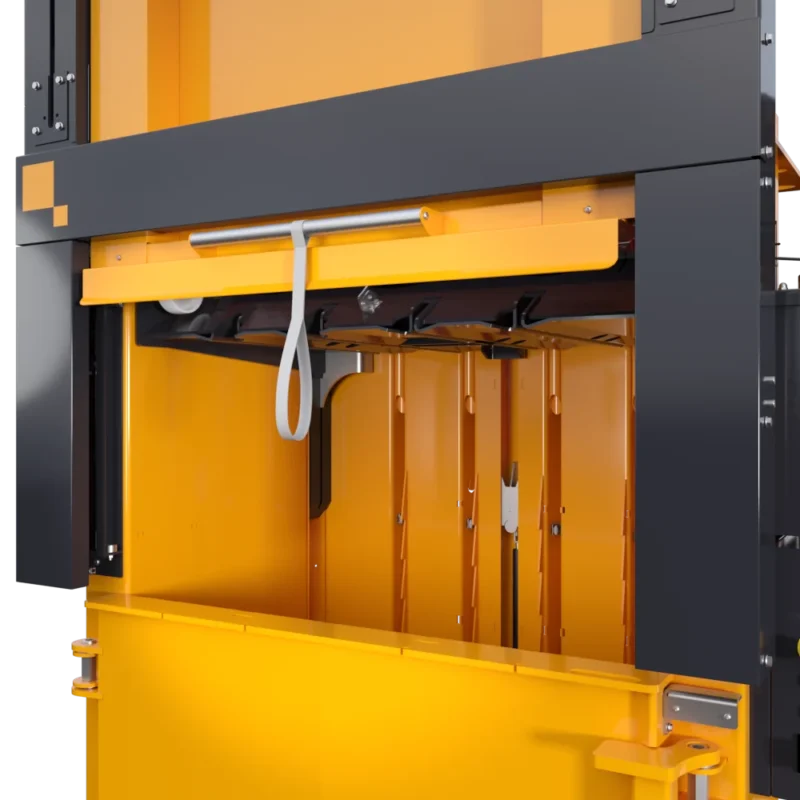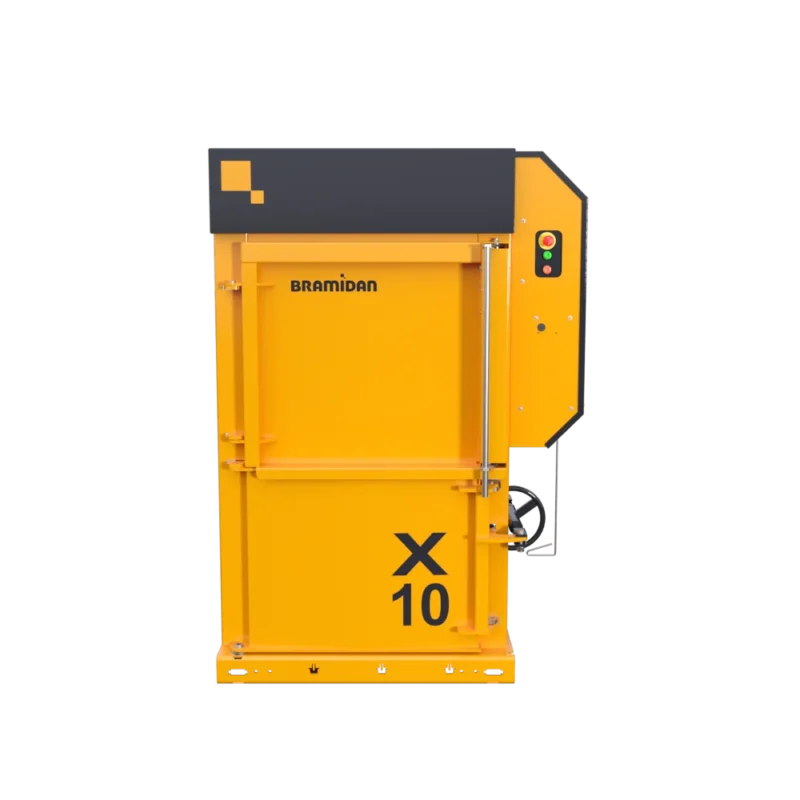How to Choose a Baler Door

Why Baler Door Design Matters
Different door types offer different benefits depending on your available space, loading habits, and waste volume. Choosing the right baler door may seem like a small detail — but it plays a significant role in how efficiently and safely your vertical baler operates. The door type affects your loading workflow, space requirements, and the operator’s experience.
In tight spaces or high-throughput environments, the door mechanism can either streamline or slow down your waste handling process. That’s why it’s important to consider both design and workflow when selecting the right door for your needs.
Improve Efficiency With the Right Door Type
The door mechanism influences how quickly operators can load waste, especially when material is bulky or needs to be deposited continuously throughout the day. A sliding or automatic door may reduce loading time and allow for easier access compared to a standard swing door.
Safety and Ergonomics in Vertical Baler Use
Door design also impacts operator safety and comfort. Manual doors require physical effort, while automatic options improve ergonomics and reduce repetitive strain. A door that stays open during the loading process like our SD sliding door minimizes contact with moving parts and speeds up daily operation.
Overview of Baler Door Types

Sliding Doors (SD)
Sliding doors stay open during loading, making them ideal for high-frequency waste input. Once the chamber is full, the operator pulls the door down manually to start the press cycle — and when the cycle ends, the door opens automatically.
- Always open for quick and easy loading
- Reduces contact with door handles and moving parts
- Great for frequent or continuous waste input
- Available on B6030 SD, B50 SD, B7242 SD

Standard Door
Our standard door configuration on all Bramidan vertical balers opens manually to the left and is simple, safe, and easy to operate — ideal for conventional setups where space is not restricted.
- Easy to use and familiar for most operators
- Reliable and low-maintenance
- Suitable for most waste types and volumes
- Available on all vertical balers
Choosing the Right Door for Your Vertical Baler
Selecting the best door for your vertical baler depends on more than just machine type. You’ll need to consider your available space, the type and volume of waste you handle, and how your staff loads material. The right door setup can improve safety, reduce strain on operators, and speed up your waste handling process.
Match Door Type to Waste Volume and Workflow
If your team is loading waste frequently throughout the day, or the waste is bulky and lightweight, a sliding door can significantly speed up operations. For example, retail stores with lots of cardboard may benefit from an SD door for easy, continuous loading.
In contrast, standard doors work well for moderate waste volumes and where there’s enough space to open the door freely.
Consider Space and Loading Preferences
In confined areas — such as backrooms, warehouses or corners near walls — a standard door may limit access or interfere with nearby equipment. In those cases, a sliding or automatic door reduces the need for clearance and allows for smoother workflow.
Think about how the machine will be loaded: do you load multiple times a day, or in batches? Do you need to accommodate large cardboard boxes or soft plastic? The right door can make this process quicker and safer.
Still Unsure Which Baler Door Option Fits Your Workspace and Workflow Best?
Don’t worry, our team can help you compare models and configurations based on your waste volume, loading frequency, layout and staff preferences. With more than 150,000 machines installed worldwide, Bramidan offers tailored solutions that optimize safety, performance, and efficiency.
Whether you’re considering a compact baler with a standard door or a heavy-duty machine with sliding or automatic access, we’ll help you choose the best configuration for your waste management operations.
FAQ: Most common questions and answers
A standard door opens manually to the side and is standard on all our balers. A sliding door (SD) stays open for easier loading and closes manually before compaction. After the press cycle, it opens automatically for the next load.
If you handle waste frequently or work in tight spaces, a sliding door can save time, improve workflow, and enhance operator comfort.
Not all doors are available for all models except standard doors. Automatic doors are optional on specific balers. Contact us to find out which models can be customized to fit your needs.
Sliding doors are ideal if you load waste frequently or continuously throughout the day. They reduce repetitive door handling and are especially useful when space in front of the machine is limited.
Questions? Contact Us Today



